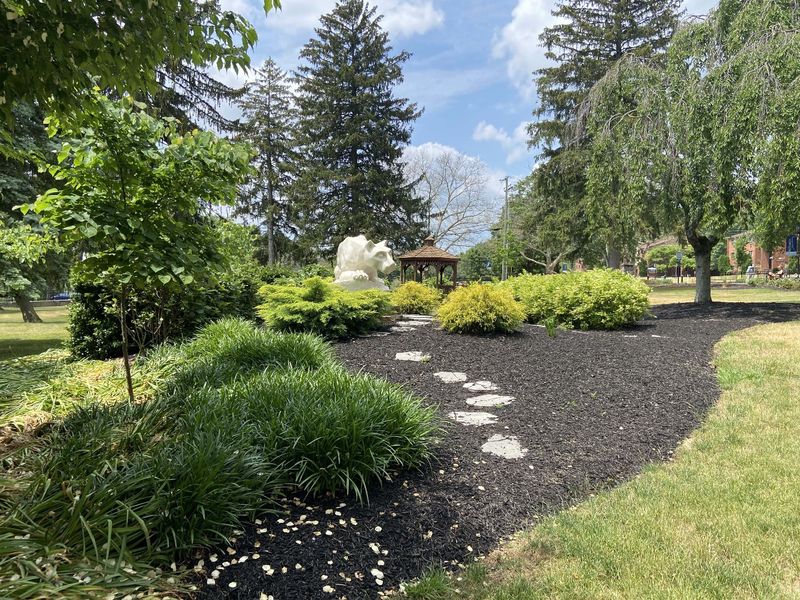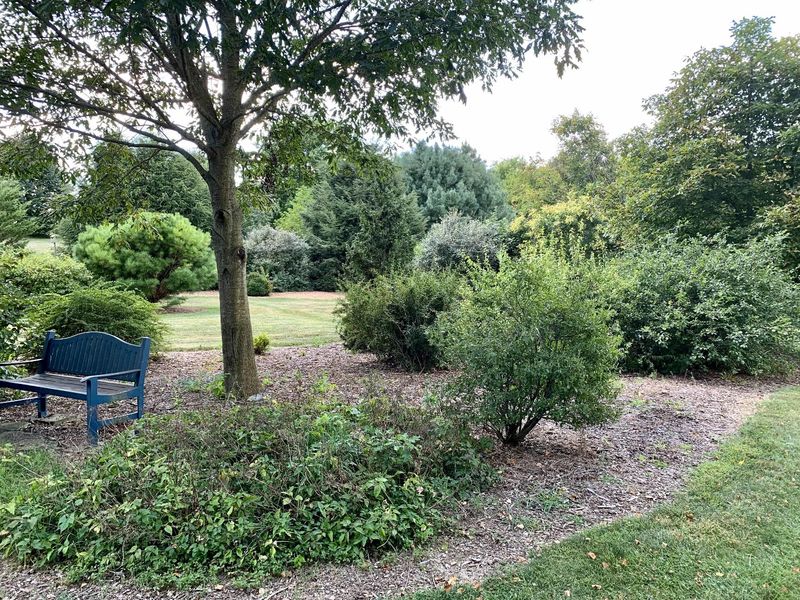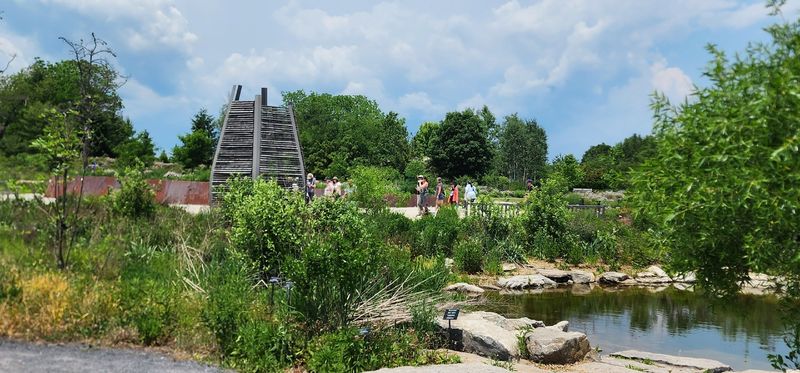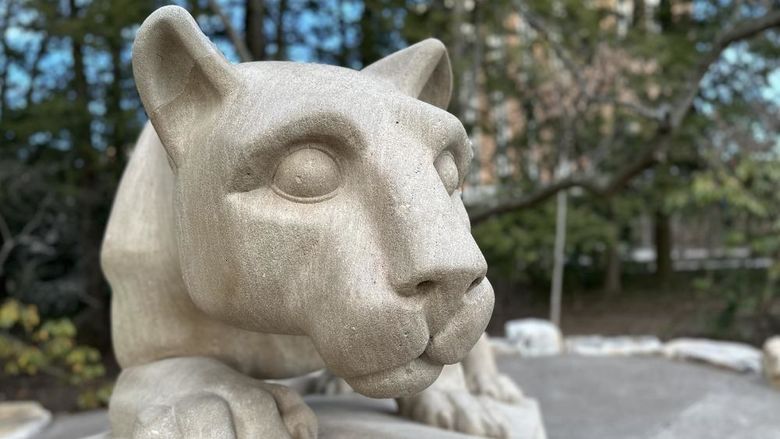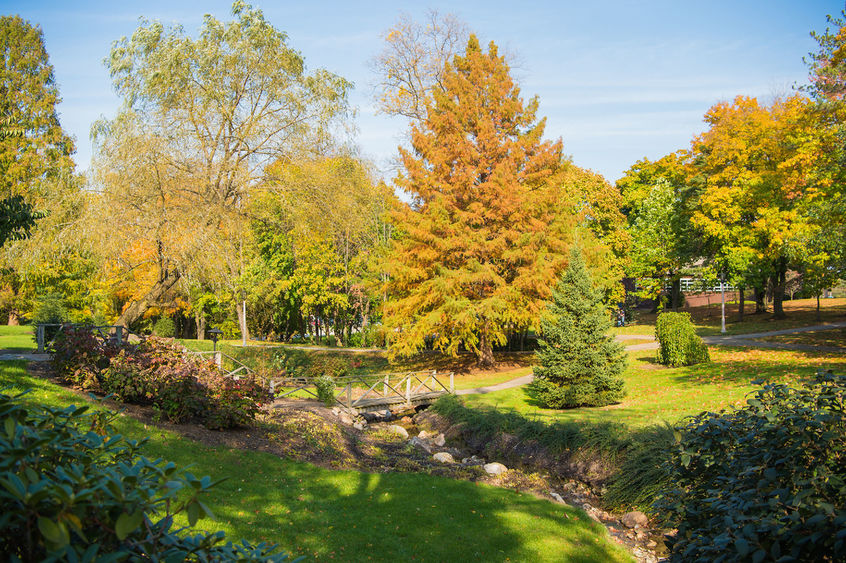
Penn State Behrend is one of seven founding members of the Commonwealth Arboreta Network, which has the eventual goal of creating an arboretum at each of the 24 Commonwealth campuses.
UNIVERSITY PARK, Pa. — Seven Penn State campuses have created a network that will inventory trees and plant life while sharing research and teaching resources, with the eventual goal of creating an arboretum at each of the University's 24 campuses.
The new Commonwealth Arboreta Network extends across the state from Penn State Behrend, on the shores of Lake Erie, to Penn State Abington in suburban Philadelphia. The seven campuses represent Pennsylvania’s diverse climates and ecoregions, said Casey Sclar, H.O. Smith Endowed Director of the Arboretum at Penn State, located at University Park.
“The Commonwealth Arboreta Network is an incredible opportunity that fulfills our land-grant mission of teaching, research and service,” Sclar said. “Together we can understand and build our living collections for greater biodiversity, provide greater research capabilities as living libraries and laboratories, and offer a daily fulfilling connection to nature that we all need.”
Founding members of the network are: Penn State Abington, Penn State Altoona, Penn State Behrend, Penn State Berks, Penn State Mont Alto, Penn State Schuylkill and Penn State University Park. Other Penn State campuses have expressed interest in joining in the future.
Sclar is director of the network, and Mary Ann Smith, a lecturer of biology and curator of Penn State Schuylkill’s arboretum, is faculty chair.
"The development of the Commonwealth Arboreta Network is a great opportunity for our campuses to have an active collaborative community willing to have discussions on tree species and conservation as well as data collection and pedagogy,” Smith said. “I hope as we foster these relationships that we develop programming and research opportunities to help us track climate change's impact on Pennsylvania's biodiversity, while also engaging more undergraduates in these sciences.”
The network’s first task is to inventory tree plantings on the campuses and unite them in a common database and mapping resource, creating opportunities for credit and non-credit classes in programs including biology, botany, ecology, sustainability and horticulture, and to develop joint research projects in topics such as urban forestry, climate adaptation, horticulture practices, entomology and plant pathology.
Faculty participating in the network have diverse areas of expertise that the network can tap into to explore different questions, while Penn State’s Office of Physical Plant will gain a valuable planning tool, Sclar said.
“It's everything from ‘How do we establish workforce training programs that create the horticulturist of tomorrow?’ to ‘How do we analyze the overall impacts of climate change on a very diverse commonwealth and its horticultural resources?’”
Initial project funding to inspire the creation of arboreta at each of the 24 Penn State campuses was made possible by the James and Barbara Ingram Endowment for the Penn State Arboreta. James Ingram, president and chief operating officer of Bartlett Tree Experts, earned an associate degree in forest technology from Penn State Mont Alto in 1979 and a bachelor’s degree in agriculture at University Park in 1983.
“We are extremely proud to support this effort that leverages the capabilities of the Commonwealth Campuses, talented Penn State faculty, and the power of trees themselves to serve as teaching, research and community resources in sustaining and enhancing our lives” Ingram said. “We can provide student success, applied research opportunities, and campus beautification efforts through conservation and appreciation for the value of trees. Penn’s woods are worth saving!”
The arboreta network showcases “our unique ability at Penn State to unite 24 campuses through the power of trees,” Sclar said. “When you look at other land-grant schools, there are very few that have that capacity that we have in the Commonwealth Campuses. This is a great example of how important the Commonwealth Campuses are to the success of Penn State.”
